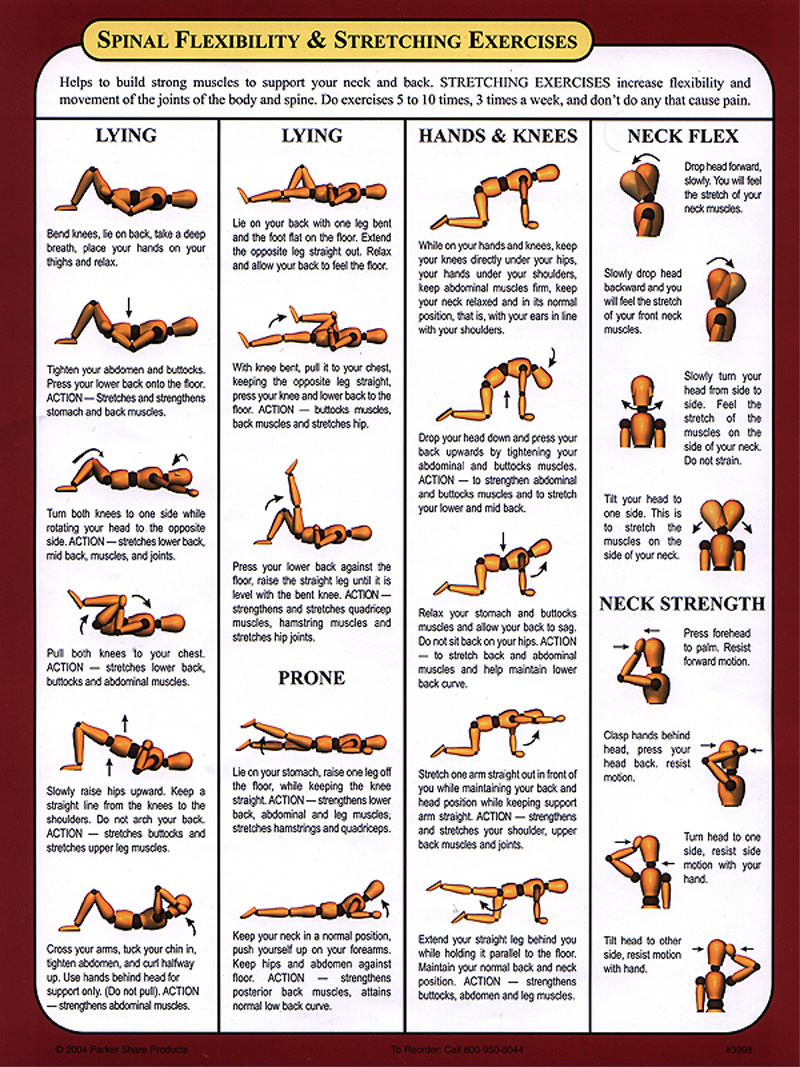Ever since your very first PE class in elementary school, you’ve heard that stretching is important. But when you’re short on time, you may be tempted to skip the stretches so you can log a few extra minutes of cardio. Don’t. Whether you’re about to start your CrossFit workout or aren’t planning to break a sweat at all today, daily stretching is a healthy habit that really pays off. Here are some of the perks it may provide. (Get long and lean with sexy Flat Belly Yoga!)

1. You’ll be bright-eyed and raring to go—even at 3 PM.
If you’re totally spent by mid afternoon, a stretch break will invigorate you in less time than it would take for a barista to whip up your usual mocha venti skim latte. Just a few minutes of stretching increases blood flow through your entire body—including your brain, says Jennifer Warthan, a certified personal trainer in Surry, VA. “It wakes you up and helps you feel less sluggish.”

2. You’ll be less likely to trip and fall.
A recent study tested 42 college students to see whether stretching would impact how long they could stay on a contraption called a stabilometer. The students who stretched for 30 minutes beforehand were able to balance longer than those who sat quietly before they hopped aboard. Researchers think stretching could help with fine-muscle coordination—meaning those who stretched first might have been able to avoid a tumble by making small balance
adjustments.

3. You’ll move around more easily and with less pain.
Regular stretching can relieve stiff muscles and creaky joints, but to reap those benefits, it’s important to stretch the correct way. “Avoid the static stretch, or ‘stretch and hold,'” says Michael Ross, MD, medical director for Rothman Institute Performance Lab. “Focus on mobility by doing range-of-motion exercises and soft tissue work with foam rollers.” Range-of-motion exercises include shoulder shrugs, wrist bends, and knee lifts—anything that keeps your muscles and joints moving through (you guessed it!) their full range of motion.

4. You’ll make the most of your sweat session.
Unless you’re a yogi or a barre aficionado, flexibility may not seem like a huge priority. But regular stretching can help you achieve better form in just about any workout: “For something like a squat, it means you could get a deeper squat. Your knees and hip flexors will bend farther,” Warthan says. “You’ll get more out of the workout.”

5. You might be less likely to injure yourself.
The scientific evidence on this one is iffy, but incorporating stretching into your warm-up—never try to stretch cold muscles—might help your body get ready for exercise as well as switch your brain into “workout mode,” says Charles Drass, a certified personal trainer in Marlton, NJ. “Stretching can’t totally eliminate injury, but it could certainly help from a mindset perspective” by getting you more focused so you’re less likely to make an ouch-inducing misstep. Try a few minutes of dynamic stretching, like arm circles and lunges, before you really get going.

6. You may lower your blood sugar.
Exercise is well known for helping keep glucose levels in check, and it turns out that benefit might kick in even before you lace up your sneakers: A 2011 study of adults who had type 2 diabetes or were prediabetic found that those who stretched for 40 minutes after drinking a sugary beverage had lower blood sugar levels than those who did “mock stretching”— in other words, assumed the same positions but didn’t actually stretch their muscles.


7. You’ll stress less.
Are your shoulders practically touching your ears? Is your back in knots? Stretching can help tame tension both physically and mentally, as it relieves tight muscles while tricking you into feeling more relaxed. (Try this 60-second fix for a sore neck.) Just don’t overdo it, especially if you’re wound pretty tight: “Stretching should never be forced,” Drass says. “You should be able to relax into a stretch. If you’re in pain, you’re doing it wrong.”
But all of this is just advice. You can do whatever the fu** you wanna do! 🙂
Your friend and coach,
Crystal aka Barbell Barbie.NY
References:
Hilyer, J.C., et al,. 1990. A flexibility intervention to reduce the incidence of severity of joint binjuries among municipal firefighters. Journal of Occupational Medicine, 32(7), 631-637.
Pope, R.P., et al. 2000. A randomized trial of preexercise stretching for prevention of lower-limb injury. Medicine and Science in Sports and Exercise, 32(2), 271-277.
Shier, I. 2004. Does Stretching Improve Performance?: A Systematic and Critical Review of the Literature. Clinical Journal of Sport Medicine, 14(5), 267-273.
Small, K, McNaughton, L. & Matthews, M. 2008. A systematic review into the efficacy of static stretching as part of a warm-up for the prevention of exercise-related injury. Research in Sports Medicine, 16(3):213-231.
Woods K, Bishop P, Jones E. 2007. Warm-up and stretching in the prevention of muscular injury. Sports Medicine, 37(12):1089-1099.
Vazini Taher, A and Parnow, A. 201. Level of functional capacities following soccer-specific warm up methods among elite collegiate soccer players. Journal of Sports Medicine and Physical Fitness. Epub Jul 6.
